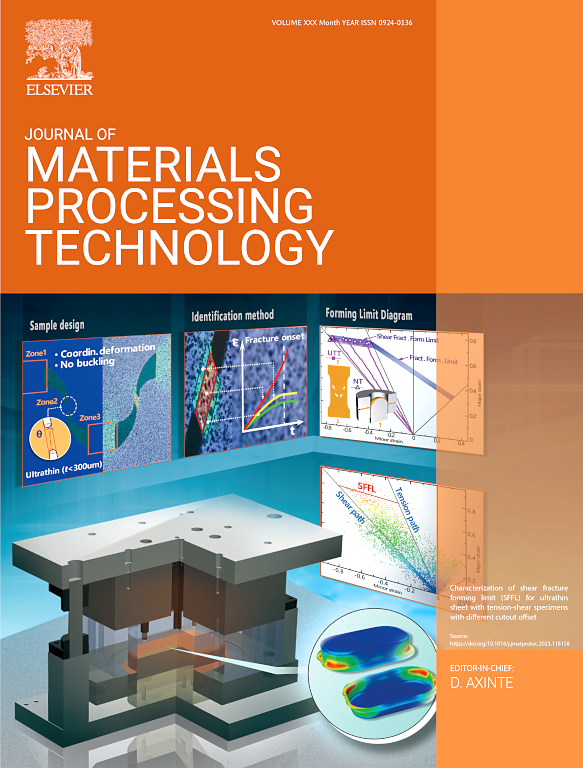Optimizing bendability and hardness of age-hardenable aluminum sheets through local thermo-mechanical processing
IF 6.7
2区 材料科学
Q1 ENGINEERING, INDUSTRIAL
Journal of Materials Processing Technology
Pub Date : 2025-02-01
DOI:10.1016/j.jmatprotec.2024.118709
引用次数: 0
Abstract
This paper introduces a novel thermo-mechanical process to modify the local formability and hardness of 6xxx aluminum (Al−Mg−Si−Cu) alloy sheets in T4 and T6 tempers. In this process, two pairs of rollers travel along the length of a sheet while locally bending and unbending it so that the final shape and thickness of the sheet remains unchanged. It is possible to apply local deformation and/or heating with the process and control the properties separately. Room temperature bending/unbending (B/U) produces a deformation gradient through thickness and local hardening in both T4 and T6 sheets (with 38 % and 15 % greater Vickers hardness, respectively). High temperature B/U performed at ∼ 500 °C via induction heating, produces T4-temper-level bendability (bend angles of ∼ 150°) within the high temperature B/U processed zones of T6 sheets, without disturbing the T6 temper in the remainder of the sheet. T4 sheets benefit from the B/U deformation more than the T6 sheets, and the process offers increased local hardness of T4 sheets without significant loss in formability mainly due the heterogenous microstructure development and the weakened Cube texture through thickness. Individual control of local bendability and hardness in both tempers can enable downgauging and increase their usage in automotive applications.
求助全文
约1分钟内获得全文
求助全文
来源期刊

Journal of Materials Processing Technology
工程技术-材料科学:综合
CiteScore
12.60
自引率
4.80%
发文量
403
审稿时长
29 days
期刊介绍:
The Journal of Materials Processing Technology covers the processing techniques used in manufacturing components from metals and other materials. The journal aims to publish full research papers of original, significant and rigorous work and so to contribute to increased production efficiency and improved component performance.
Areas of interest to the journal include:
• Casting, forming and machining
• Additive processing and joining technologies
• The evolution of material properties under the specific conditions met in manufacturing processes
• Surface engineering when it relates specifically to a manufacturing process
• Design and behavior of equipment and tools.
 求助内容:
求助内容: 应助结果提醒方式:
应助结果提醒方式:


